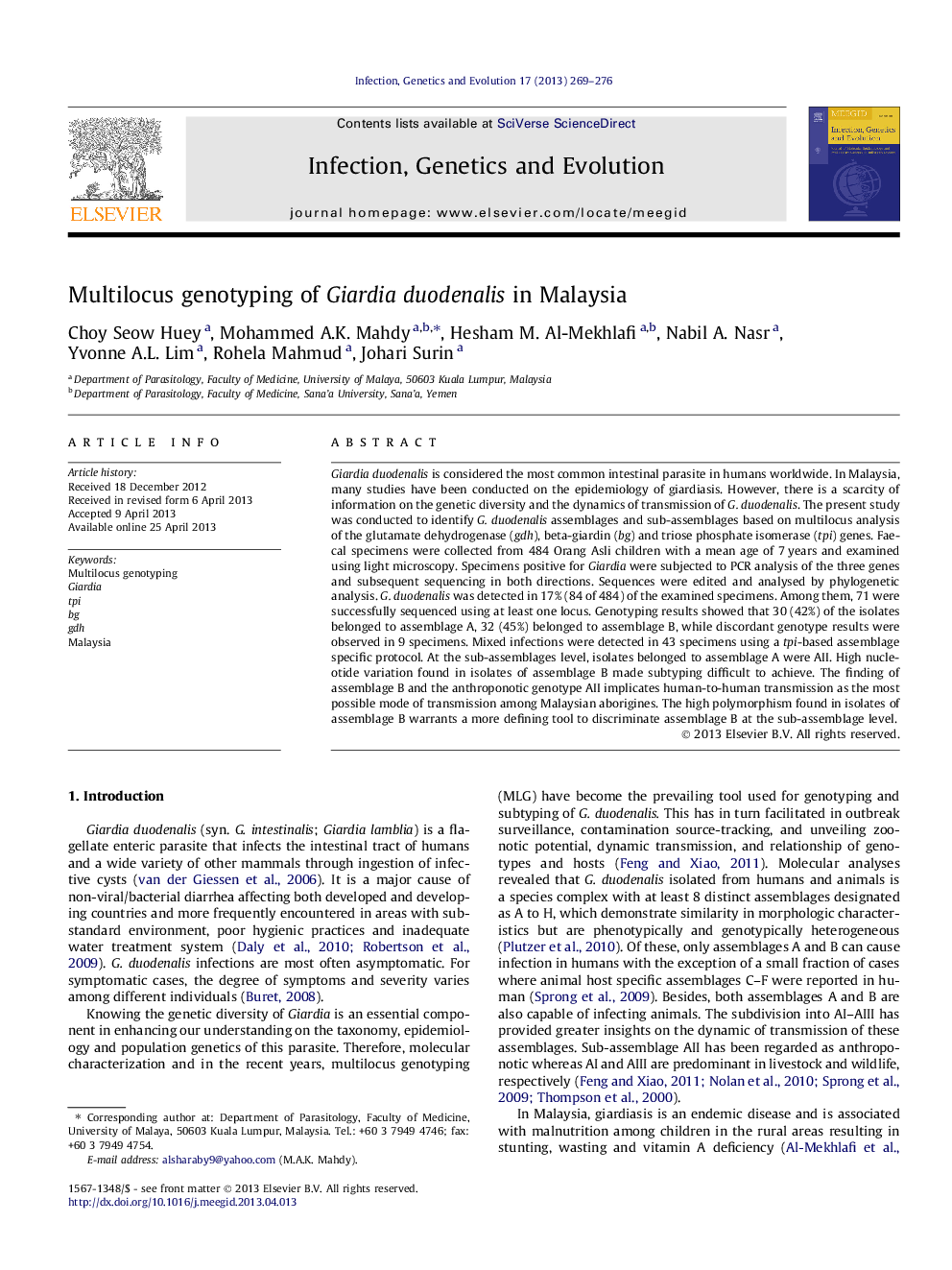| کد مقاله | کد نشریه | سال انتشار | مقاله انگلیسی | نسخه تمام متن |
|---|---|---|---|---|
| 5910403 | 1570186 | 2013 | 8 صفحه PDF | دانلود رایگان |
- All isolates of G. duodenalis are anthroponotic genotypes.
- Assemblage B isolates had high nucleotide variations.
- The study showed high proportion of mixed assemblages A and B.
Giardia duodenalis is considered the most common intestinal parasite in humans worldwide. In Malaysia, many studies have been conducted on the epidemiology of giardiasis. However, there is a scarcity of information on the genetic diversity and the dynamics of transmission of G. duodenalis. The present study was conducted to identify G. duodenalis assemblages and sub-assemblages based on multilocus analysis of the glutamate dehydrogenase (gdh), beta-giardin (bg) and triose phosphate isomerase (tpi) genes. Faecal specimens were collected from 484 Orang Asli children with a mean age of 7Â years and examined using light microscopy. Specimens positive for Giardia were subjected to PCR analysis of the three genes and subsequent sequencing in both directions. Sequences were edited and analysed by phylogenetic analysis. G. duodenalis was detected in 17% (84 of 484) of the examined specimens. Among them, 71 were successfully sequenced using at least one locus. Genotyping results showed that 30 (42%) of the isolates belonged to assemblage A, 32 (45%) belonged to assemblage B, while discordant genotype results were observed in 9 specimens. Mixed infections were detected in 43 specimens using a tpi-based assemblage specific protocol. At the sub-assemblages level, isolates belonged to assemblage A were AII. High nucleotide variation found in isolates of assemblage B made subtyping difficult to achieve. The finding of assemblage B and the anthroponotic genotype AII implicates human-to-human transmission as the most possible mode of transmission among Malaysian aborigines. The high polymorphism found in isolates of assemblage B warrants a more defining tool to discriminate assemblage B at the sub-assemblage level.
Journal: Infection, Genetics and Evolution - Volume 17, July 2013, Pages 269-276
